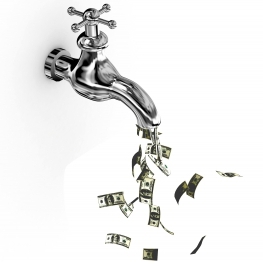What can we say about the problems that arise when drafting reports to claim business travel expenses! The usual scenario is that this task has been left until the end of the reporting period (for a month in most cases). The last Friday of the month arrives and we are faced with a bundle of receipts that have been piling up and a long expense report to draft. This is where the problems begin.

There are receipts missing, some left on the table at a restaurant, others screwed up, stained or illegible. Finding them all, putting them in order and entering them on the spreadsheet or expense management platform used by the company is in no way a pleasant task.
80% of employees that generate expense reports spend half an hour drafting them.
If we add up all the months for each team member who travels, the resulting total is by no means negligible.
It is also common for information to be forgotten in relation to the context in which the expense was generated, and this may affect whether or not the expense report is approved in line with the company’s expense policy. Questions arise along the lines of “Is this the receipt for the meal that I bought for the customer, or for when I had lunch with Anna and should therefore be divided in half ?”. To deal with such issues, it is a widespread practice to write down notes on the back of the receipts. Hardly a sophisticated strategy but effective at the end of the day.
One way of simplifying this scenario is to apply the use of allowances. This strategy is common and is based on setting a specific amount that covers the employee’s food and accommodation expenses. This facilitates management but hinders the exact supervision of expenses. It is a good idea to establish thorough conditions and verify that they are being complied with.
The hackneyed advice in this situation is to keep on top of things, drafting expense reports as you go. However, seasoned travellers know that this recommendation is easier said than done. As a result, there are various tools available on the market to automate the process to a greater or lesser degree. There are management tools the make it easier to enter data related to expenses gradually. The most sophisticated systems make use of an asset that is ubiquitous nowadays: the mobile phone, to record expenses wherever they are generated. Meanwhile, other companies give their team access to an ‘employee portal’ where they can record their expenses. As they are web-based tools, they can be accessed from anywhere with an internet connection.
To avoid the problems and errors that arise from drafting the expense report last thing at night for a business trip from which you have just returned, it is a good idea to take advantage of these tools that automate reporting tasks and let you deal with them more gradually.





